Intro
This post started with a question from one of my readers: what is Katsushika? A few things come to mind:
- Katsushika 葛飾区 is one of Tokyo’s 23 main wards; it’s on the fringes and probably one of the least well-known
- The Nakagawa river 中川 dominates the geography of the ward, essentially splitting it down the middle
- While riding the Skyliner to Narita Airport, Katsushika surrounds you, an incomprehensible landscape of water, bridges and flat spaces
- There’s the Katsushika regional and astronomical museum 葛飾区郷土と天文の博物館 (map), though I’ve never been
- Katsushika is at the northeast corner of Tokyo’s 23 wards, seen here in the following map:

And a map of the items featured in this post:
I. Walking aimlessly (my first visit to Katsushika)
Point at a Tokyo map enough times and eventually your finger will land on Aoto station 青砥駅, as mine did a few years ago. Later that day my legs took me to Aoto and walked east, crossing the Nakagawa River via the Takasago-bashi 高砂橋, a bridge far more modern than the surrounding neighborhood (map)(Streetview):

On the east side of the river I followed a road with trees lining the median strip, a telltale sign that this used to be a river (map).

This is Takasago, a quiet, un-flashy, and predominately pleasant neighborhood. The land is flat, but the high building density obscures anything other than the immediate surroundings. Tokyo Sky Tree isn’t even visible, though it could be seen back at Takasago-bashi. There’s a geographical ambiguity about this place – the center of Tokyo could be quite close or very far away, Takasago is comfortable, anonymous, re-assuring.
I saw old looking businesses…


I sat on a bench in a well-used park next to a housing complex; the spring breeze played with the branches of the mature shade trees (map).
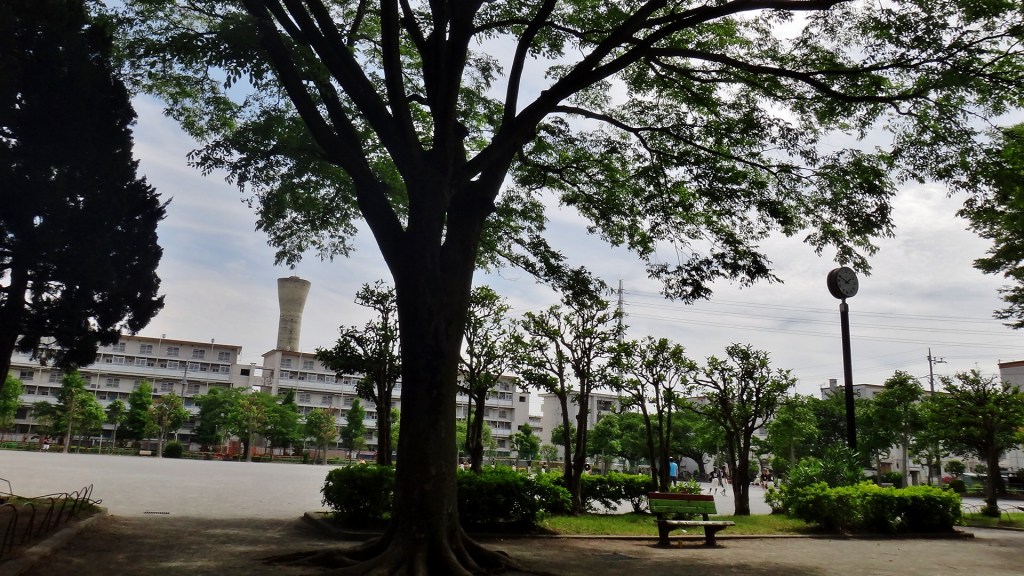
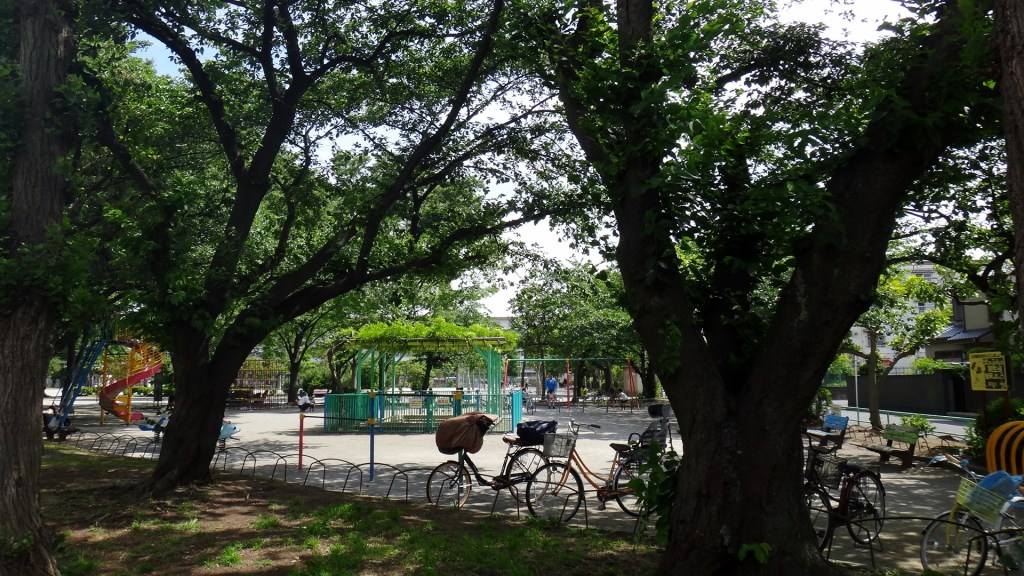
The neighboring danchi used to be Toei Takasago Apartment 都営高砂アパート, but has been rebuilt as “Takasago Yonchome Apartment” 「高砂四丁目アパート」.
II. A salaryman statue?
Not far from the park I came across groups of people taking photos with a statue of a middle-aged man.

Is this a monument to the Japanese salaryman? A memorial to the Tokyo commuter?
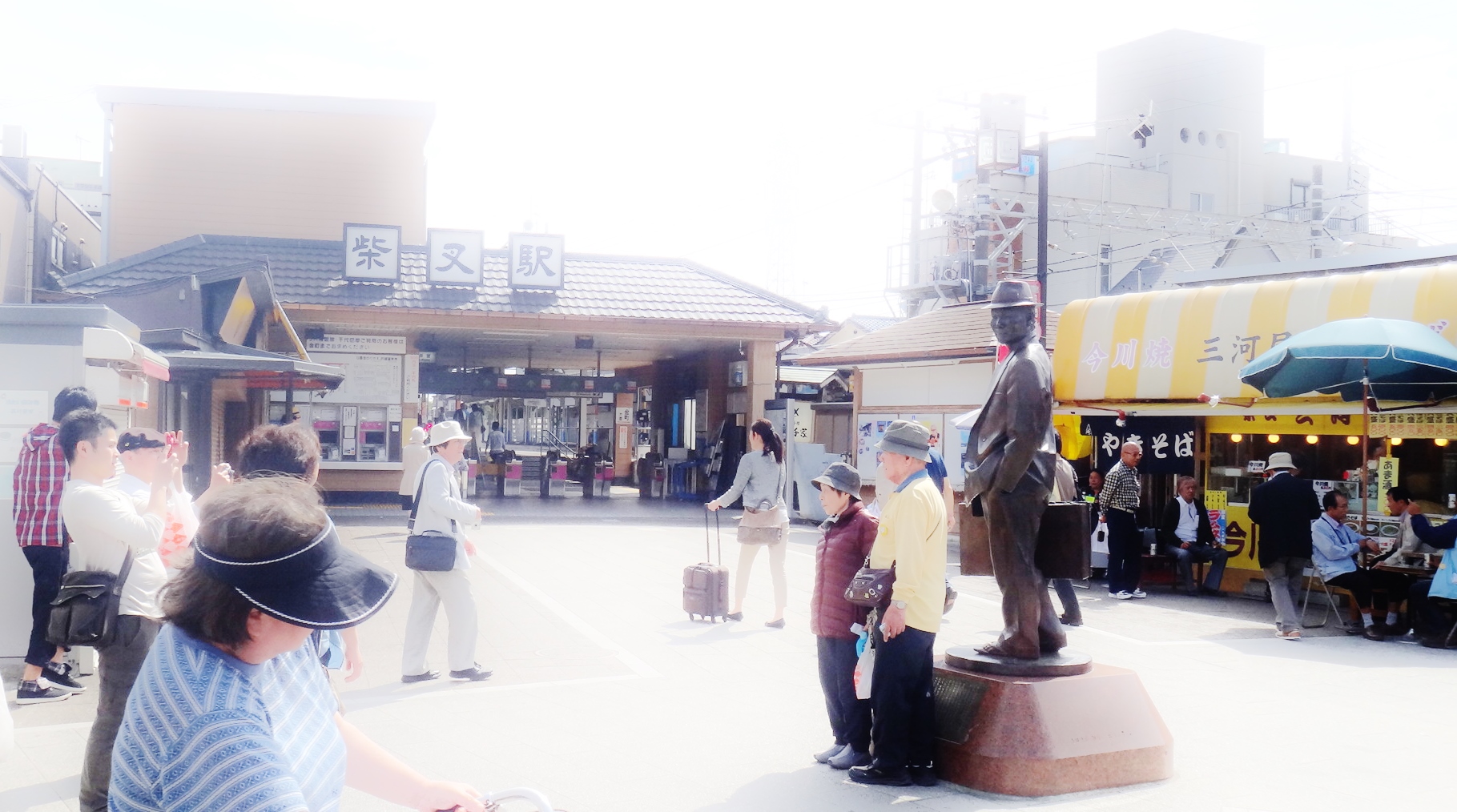
It’s no salaryman, it’s Tora-san 寅さん, the legendary film character from the series Otoko wa Tsurai yo 男はつらいよ “It’s tough being a man” (aka the “Tora-san” series). I would learn that Tora-san was born here in the Shibamata 柴又 section of Katsushika ward.
The statue is named フーテンの寅像 (Futen-no-Tora-zo), which means “Statue of Tora-san the wanderer” (map). Glossary: フーテン = futen = wanderer / 寅 = Tora, as in Tora-san / 像 = zo = statue
I was only able to figure out the name of this statue due to the local map nearby. The Tora-san statue is a bottom-right, circled in yellow.

The next stop on this tour is the middle circle…
III. Taishakuten sando 帝釈天参道
Just feet from the Tora-san statue is Taishakuten-sando, a narrow, lively pedestrian road leading from Shibamata Station to Taishakuten temple. The kanji 参道, sando, means ‘approach’, as in the entrance path to a Shinto shrine. (This road is sometimes referred to as “Shibamata Temple Street” in English.)
The street is reason enough to visit Shibamata, especially if you’re in the mood for traditional Japanese shops and a festive atmosphere. This spot is far enough from central Tokyo to be invisible to casual foreign tourists. Consequently, almost all of the people I saw in Shibamata were Japanese.
Between the station and the start of the traditional shopping street:

The crowded heart of the Taishakuten-sando

If you remember one thing from today’s post, it’s that Matsuya no Ame 松屋の飴総本店 is awesome. This candy business was formed in 1868, with this location dating back to 1926 (map). One website describes this shop:
“On Sunday and national holidays, “amekiri ondou” (candy cutting tuned to folk music) is performed. That is one of the Environment Agency-designated “best 100 scenes with sound.'”
When I visited there were two men chopping sweet mochi with heavy cleavers. (I’m guessing they are father and son.)

A (brief) video of mine
A longer, better video (not mine):
IV. Shibamata Taishakuten temple 柴又帝釈天
Shibamata Taishakuten, formally Kyoeizandaikyoji 経栄山題経寺, is one of the more memorable temples in Tokyo. It was especially enjoyable on a sunny festival day:
The temple entrance gate

Beautiful temple and friendly monk

A gorgeous raised, covered corridor 回廊, pronounced かいろう, kairou. More specifically, it’s a 空中回廊 kūchū kairō, or raised/aerial corridor. Thanks to @shitamachi66 .

Shibamata Taishakuten is home to incredibly detailed wood carving protected by a glass facade.
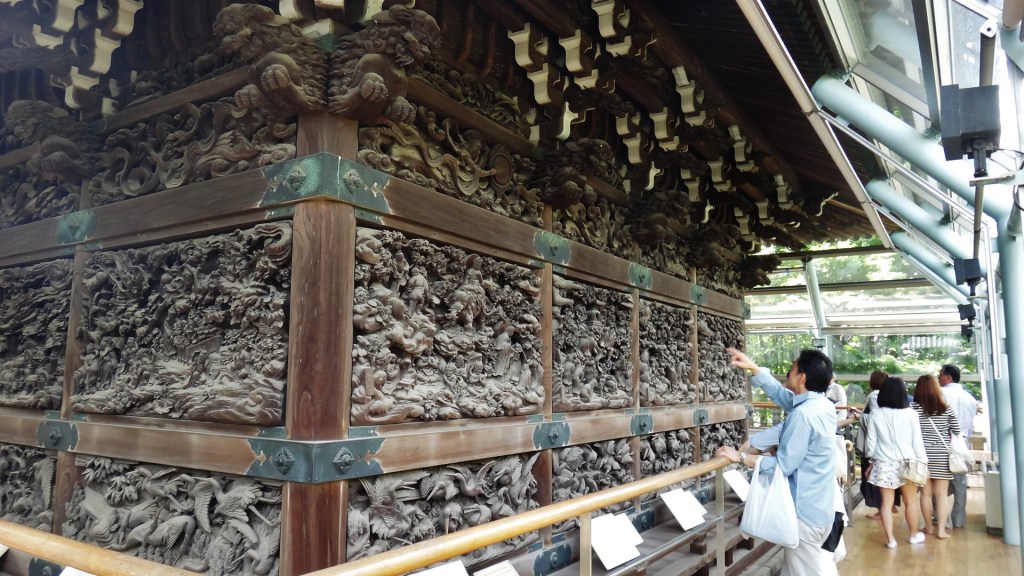
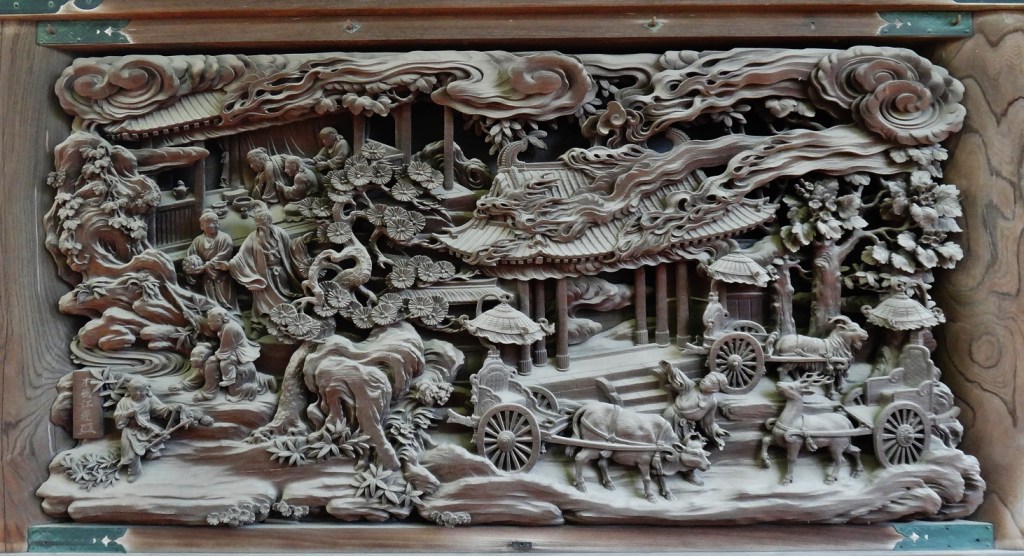
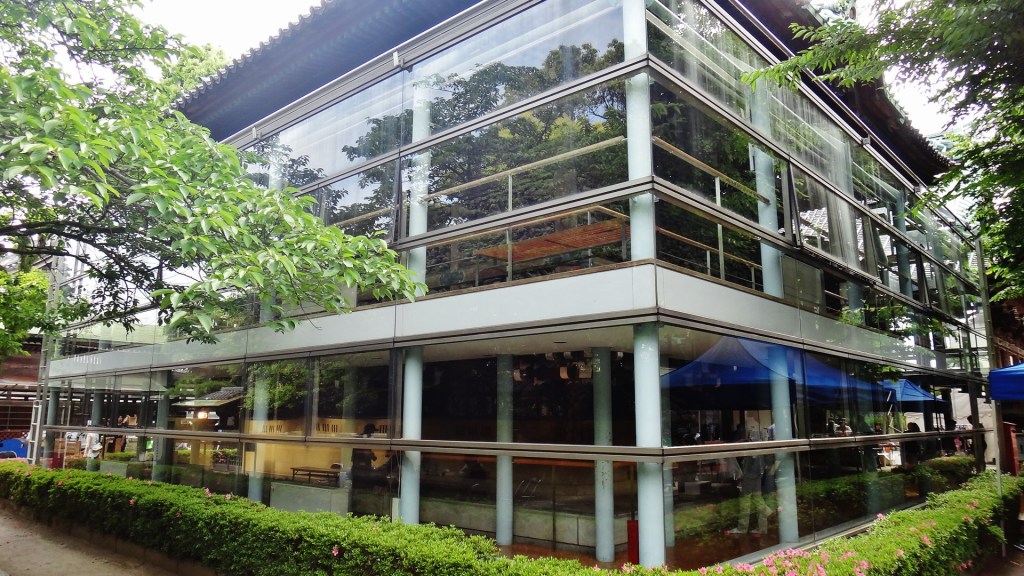
V. Raft
Not far from the temple is Yagiri-no-watashi ferry 矢切の渡し, the only remaining ferry in Tokyo. It costs 200 yen for a 1-way trip. (The ferry makes an appearance in the 1st Tora-san movie.)
Here are some pictures from my excursion:
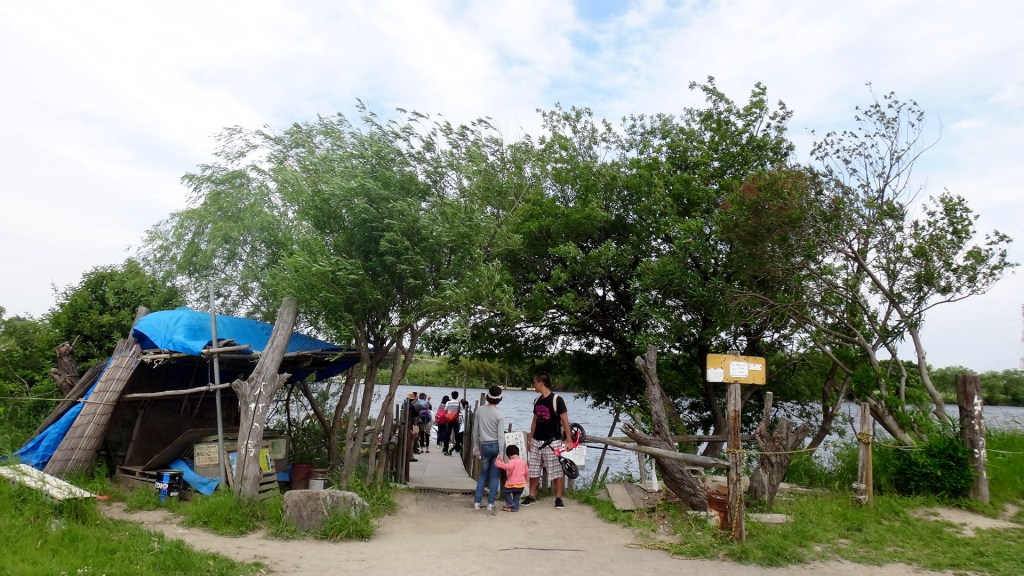
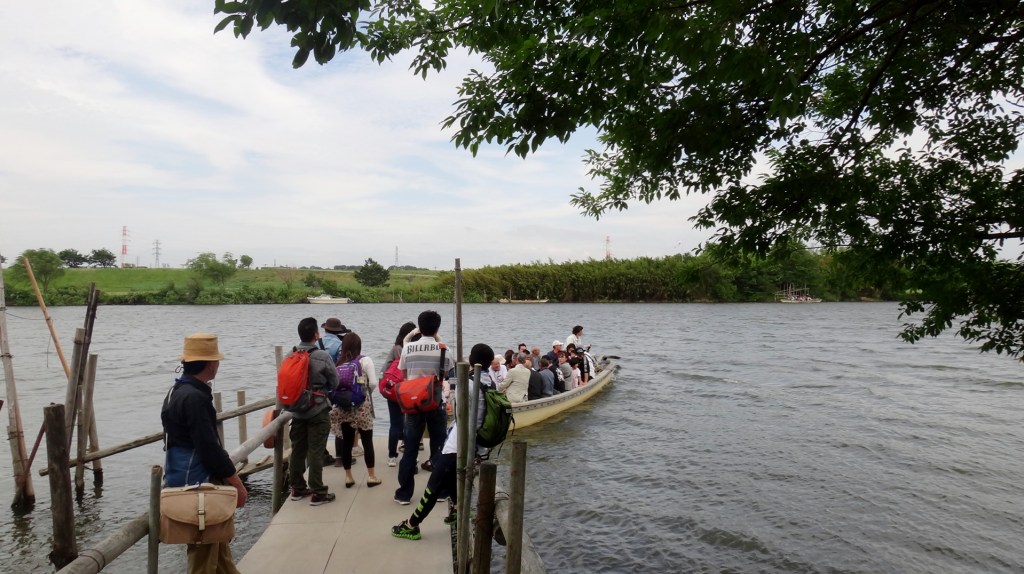
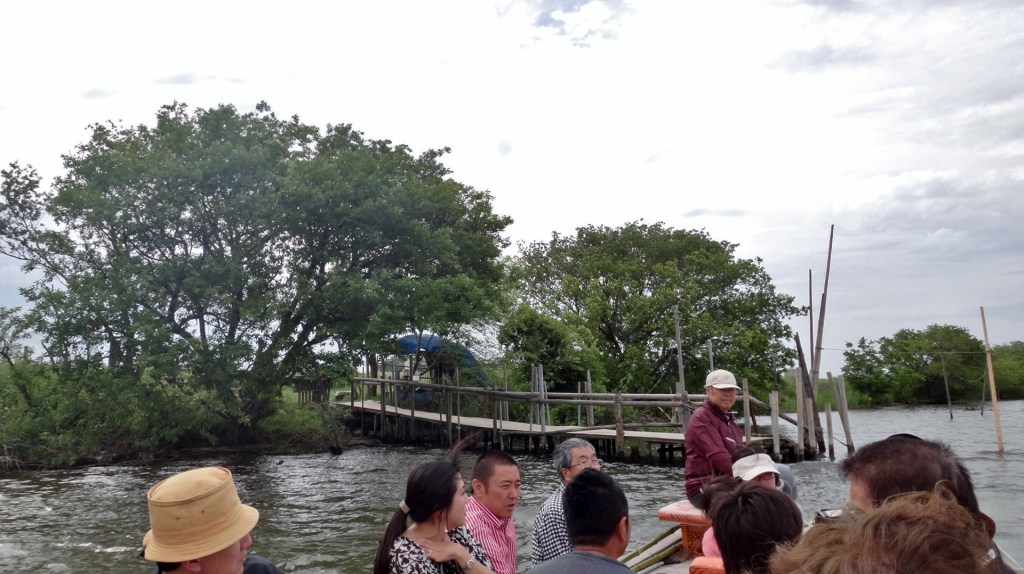
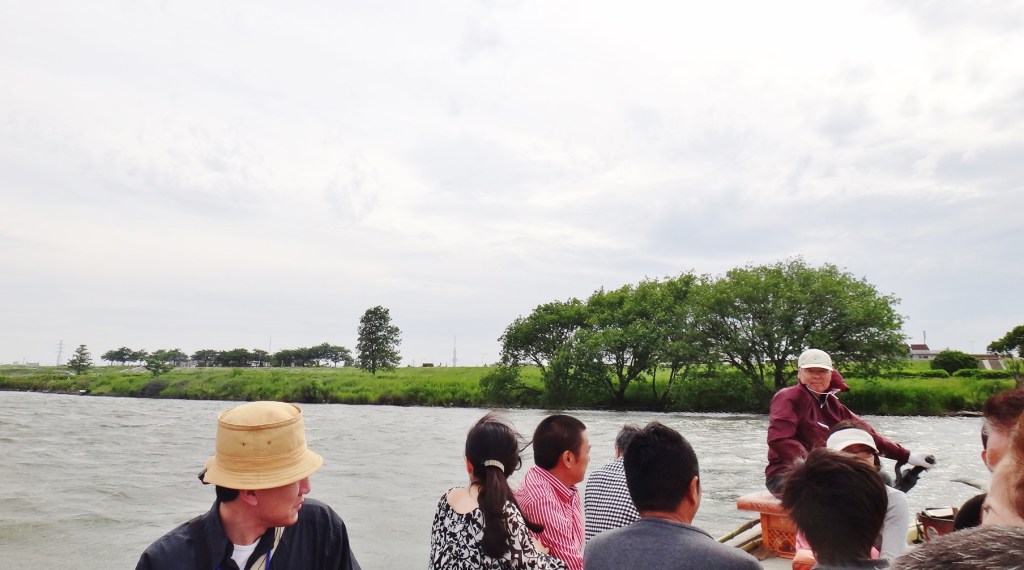
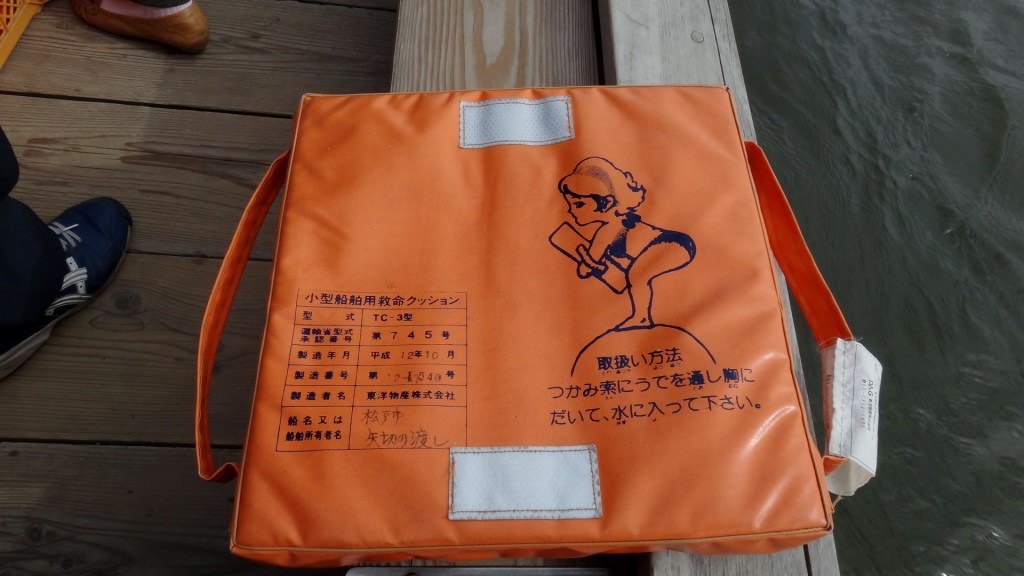
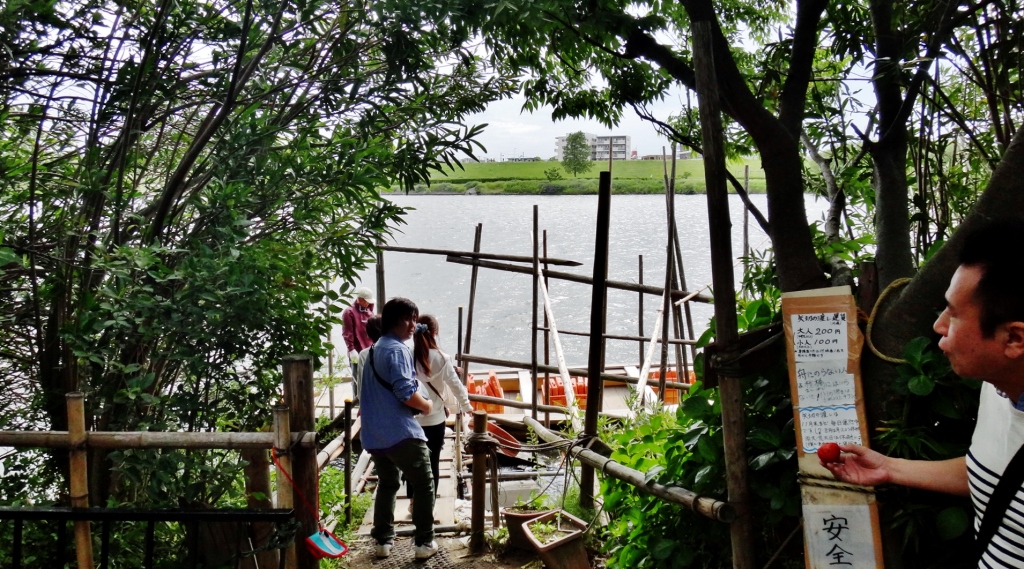
VI. Tora-san museum
Finally, let me mention a wonderful nearby museum:
- Katsushika Shibamata Tora-san Museum / 葛飾柴又寅さん記念館 (かつしかしばまたとらさんきねんかん)
- Katsushika Ward Tourism and Culture Center, 6-22-19 Shibamata, Katsushika-ku, 125-0052 (Google maps)
- 〒125-0052、葛飾区柴又6丁目22番19号 葛飾区観光文化センター内 (Google maps)
The museum has clips of the many Tora-san films, dioramas, and life-sized recreations of memorable Tora-san scenery.
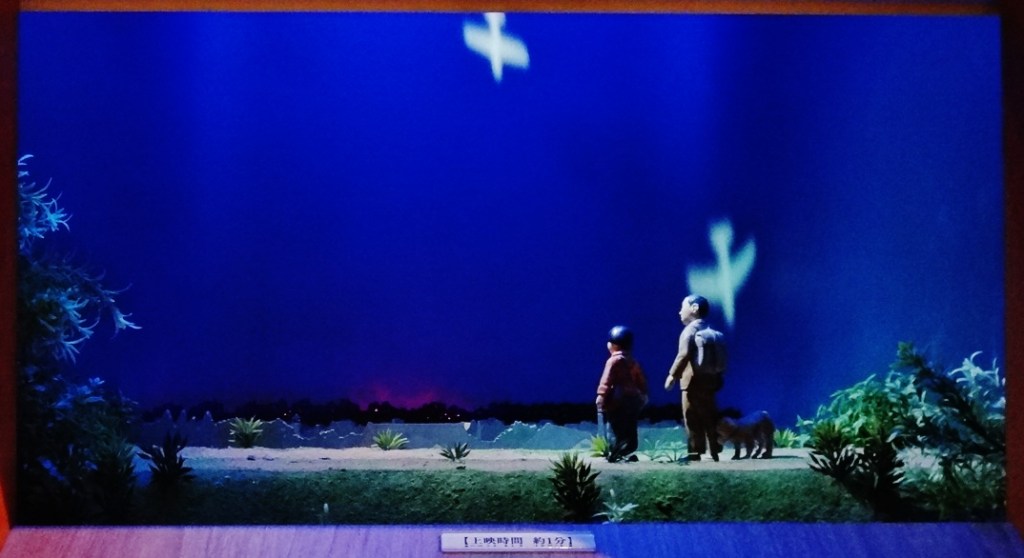

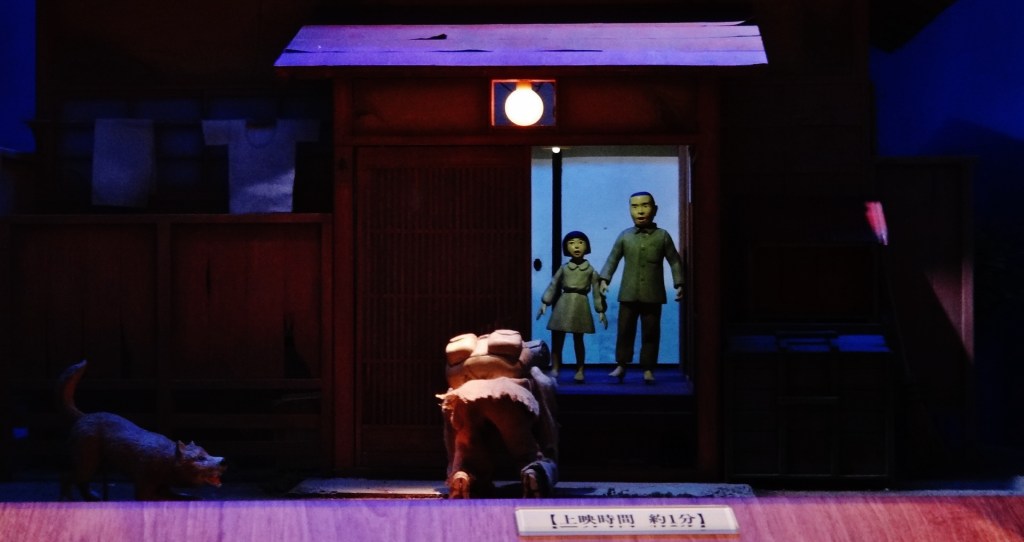
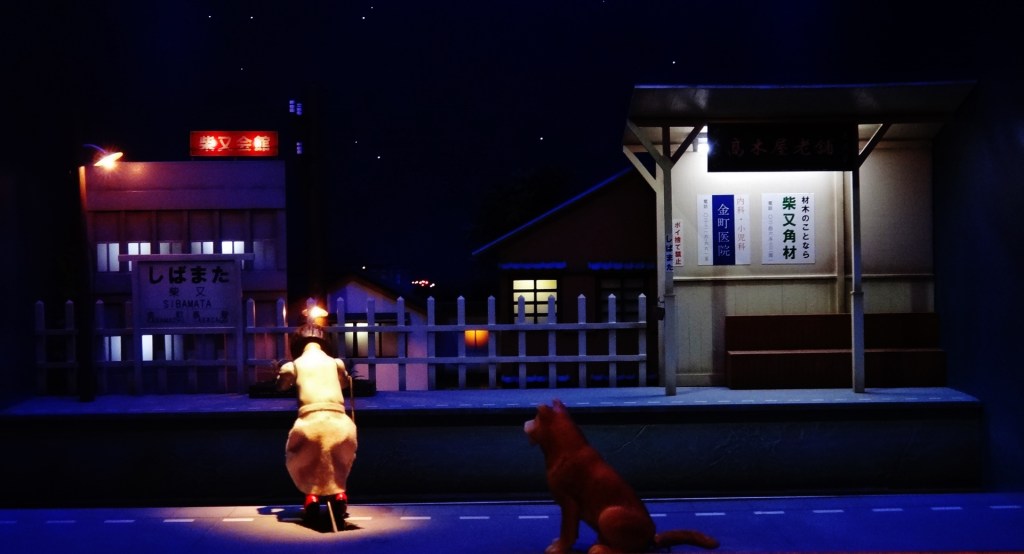
Links and Reference:
Takasago and commuters:
- Takasago Apartment (danchi) renovation (blog)
- Stamford, Connecticut has an actual salaryman / commuter statue
Tora-san
- Tora-san overview
- TORA-SAN, A TRADITION IN JAPAN (The New York Times, 1986) – “According to Mr. Yamanouchi, the Shochiku executive, the two yearly episodes account for 20 percent of the studio’s total revenue. By American standards, though, the money is not great.” / LONGEST RUNNING PER GUINNESS
- Tora-san on Wikipedia: “It’s tough being a man” series
- Tora-san, first movie (1969) (Wikipedia)
- Tora-san official website (Japanese)
- “Shibamata offers a step back into a Tora-san time warp” (The Japan Times, June, 2015)
- Shibamata Taishakuten, Tokyo – temple surrounded by nostalgic atmosphere
Temple street in Shibamata
- 100 Soundscapes of Japan 日本の音風景100選 includes the Shibamata area
- “Welcome to Temple Street in Shibamata“
- Taishakuten Sando – Shibamata Attraction
- Taishakuten Sando – Shibamata Attraction (Tokyo Bling)
Shibamata Taishakuten Temple
- Shibamata Taishakuten (Wikipedia)
- Shibamata Taishakuten (tripadvisor)
- Shibamata Taishakuten, aka Kyoeizandaikyoji 経栄山題経寺 (Japanese Wikipedia)
- Guinness World Record Holding “Tora-san” Film Series Begins dTV Distribution
Glossary:
- 柴又帝釈天参道 = Shibamata taishakutensando
- The kanji for candy cutting is ame-kiri 飴切り
[…] Shibamata Taishakuten temple 柴又帝釈天 […]
[…] post: Tokyo day trip: riding into Shibamata on Tora-san’s […]